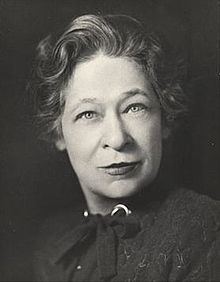Full Name Julianna Reiser Nationality American | Occupation Museum administrator Name Juliana Force | |
 | ||
Born December 25, 1876 ( 1876-12-25 ) Doylestown, Pennsylvania, U.S. Residence New York City, New York, U.S. Died 1948, New York City, New York, United States | ||
Juliana R. Force (December 25, 1876 – August 28, 1948) was an American art museum administrator and director.
Contents
Early life and education
Force was born Julianna Reiser in Doylestown, Pennsylvania, on December 25, 1876. She became known as "Juliana". She was a twin and had seven other siblings besides her twin sister. Force's last name was spelled Reiser; she later changed the spelling to Rieser. Her father was a grocer and a hatter. The Rieser family moved to Hoboken, New Jersey, in 1886. As a child Force attended a Christian boarding school for girls. For a short time in 1908 Force taught at a secretarial business school in Manhattan, downtown New York City. At the age of 35 Force married Willard Force, a dentist, then becoming known as "Juliana Rieser Force" or "Juliana Reiser Force" or "Juliana R. Force", which is sometimes shortened to "Juliana Force".
Career
Force's first job was as the personal secretary of socialite Helen Hay (wife of Payne Whitney). At the age of 38 in 1914 she became the private secretary for Helen Hay's sister-in-law, Gertrude Vanderbilt Whitney, a great-granddaughter of "Commodore" Cornelius Vanderbilt and eldest surviving daughter of Cornelius Vanderbilt II. Whitney, an art sculptress and art collector, had inherited a Vanderbilt fortune. Whitney gave as Force's first duty an assignment to help organize art exhibitions at the Colony Club, an exclusive conservative social club for wealthy socialite women in New York City. Here Force showed off Whitney's art and a different kind of new unusual art by creative artists of a group called The Eight. Whitney was making a statement that all kinds of art, including different styles of art from new artists, should be represented to the public. Whitney was interested in displaying her collection of work as well as other art from modernist artists, especially living Americans.
Whitney assigned Force in 1929 to contact the Metropolitan Museum of Art to prepare a plan for a gift of Whitney's collection. Whitney's art collection gift was to be displayed in a new wing, partly financed by her. The museum turned down the gift. Whitney then displayed her work in her own studios and galleries, that were under her name. Force managed these art enterprises and then in 1930 became director of the new Whitney Museum of American Art that developed from these art studio and gallery enterprises. Force was not trained as an art historian. She hired Lloyd Goodrich, an art historian, to be curator of the Whitney Museum of American Art, best known throughout the United States for displaying new kinds and unusual styles of modern art from living artists. Force's passion for new styles of art and her organizational traits made her an administrative director of the nationally known art museum notable for twentieth and twenty-first century art.
Folk art
Force brought about the first display of American folk art in a gallery in the United States, the "Early American Art" collection. She set up starting on February 9 of 1924 a presentation of folk art, in a Whitney gallery that she administered, intending to bring folk art attractiveness closer to the level of contemporary art. Because of her passion for folk art, this initial display led to the first official public exhibition of folk art in a public showing presentation.
Although her interactions with artists at the Whitney Studio Club inspired her to personally collect modern art, her collections of nineteenth-century and older folk art and decorative arts were larger and more significant. Her Eighth Street apartment was decorated in a Victorian style, contrary to contemporary tastes, and her home at Barley Sheaf Farm in Doylestown was filled with her folk art collection. Primarily acquired from rural antique dealers, her collection included portraits by early American limners, theorem paintings on velvet, and eclectic objects like cigar store Indians and toys.
Later life
The American Art Research Council was formed in 1942 and Force became its first chairperson. The United States government did a national tour show of German art in 1946 of war booty. Force shortly thereafter undertook a course of action to return the art to its rightful owner.
The Whitney Museum of American Art directed by Force did art shows between 1946 and 1948 on Albert Pinkham Ryder, Robert Feke and Winslow Homer to promote public awareness of these artists.
Death
Force died in New York City on August 28, 1948, and buried at the Doylestown Cemetery in Pennsylvania. The museum held a memorial exhibition in her honor in 1949.
Personal life
Juliana Reiser married Willard Force in 1911. Her husband died in 1928, and they had no children.
